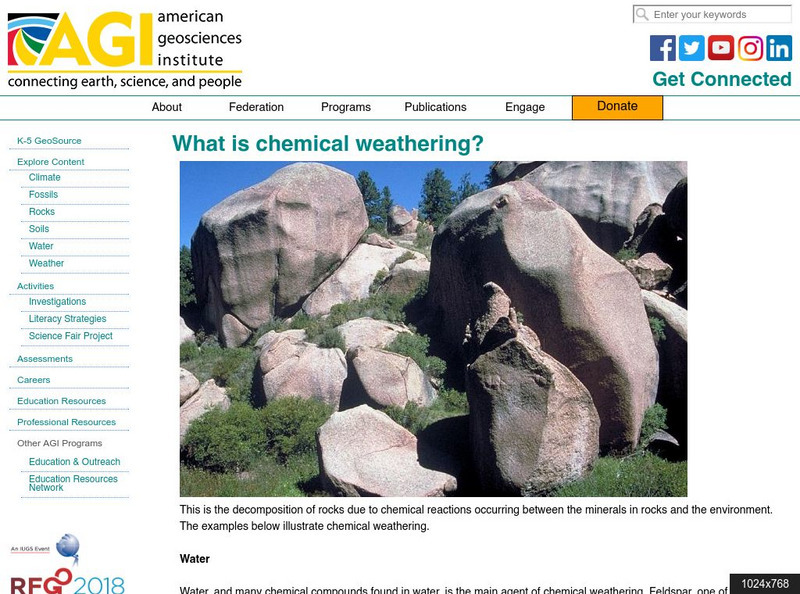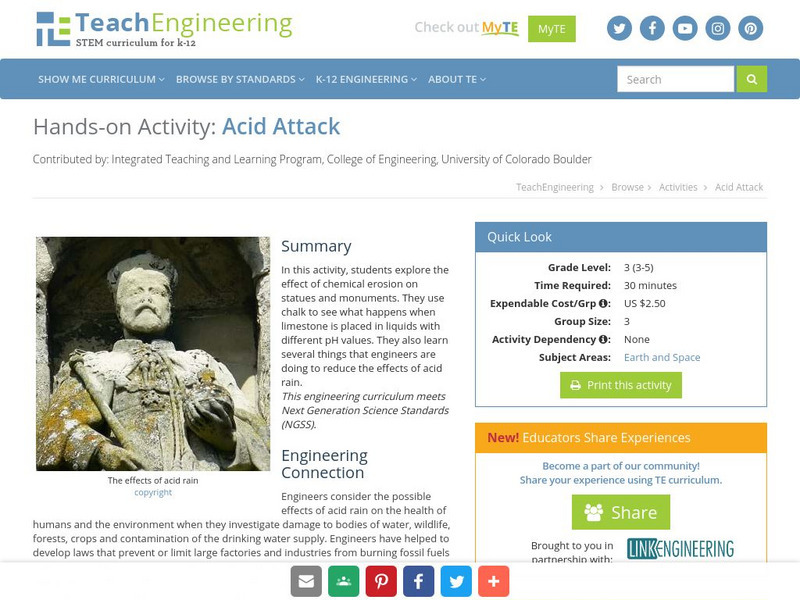American Geosciences Institute
American Geosciences Institute: What Is Chemical Weathering?
Learn about the chemical weathering processes that break down rocks.
Smithsonian Institution
Smithsonian Learning Lab: Building Up, Breaking Down
Smithsonian in the Classroom presents Building Up, Breaking Down. Teachers can download this comprehensive teaching package in which students investigate how buildings weather. See what happens to a building once it has been erected....
Science Struck
Science Struck: Guide to Mechanical Weathering and Its Major Types
Describes the different types of mechanical weathering and how each of them breaks down rocks.
Georgia Department of Education
Ga Virtual Learning: Geology: Surface Processes
In this interactive tutorial, you will learn about the types of weathering and erosion that rocks and landforms undergo. This will lead to a discussion of soil and the types of soil. Lastly, you will learn about mass movements of soil,...
TeachEngineering
Teach Engineering: Rock Solid
Rocks cover the earth's surface, including what is below or near human-made structures. With rocks everywhere, breaking rocks can be hazardous and potentially disastrous to people. Students are introduced to three types of material...
TeachEngineering
Teach Engineering: Acid Attack
In this activity, students explore the effect of chemical erosion on statues and monuments. They use chalk to see what happens when limestone is placed in liquids with different pH values. They also learn several things that engineers...
Science Buddies
Science Buddies: It's Raining, It's Pouring: Chemical Analysis of Rainwater
Here is an interesting project that could be approached from several different scientific angles: Environmental Science, Weather & Atmosphere, Chemistry, or Plant Biology. You can probably think of your own variations to emphasize...
Other
Abiotic Factors
Abiotic components are the nonliving components of the biosphere. Chemical and geological factors, such as rocks and minerals, and physical factors, such as temperature and weather, are referred to as abiotic components.





